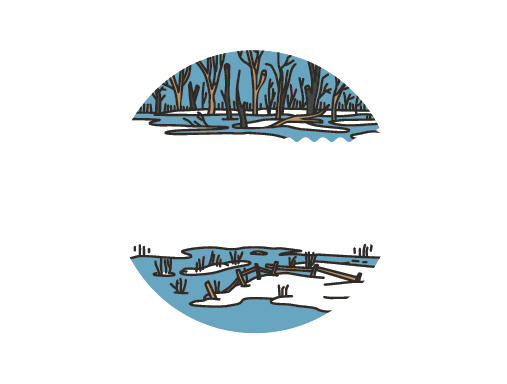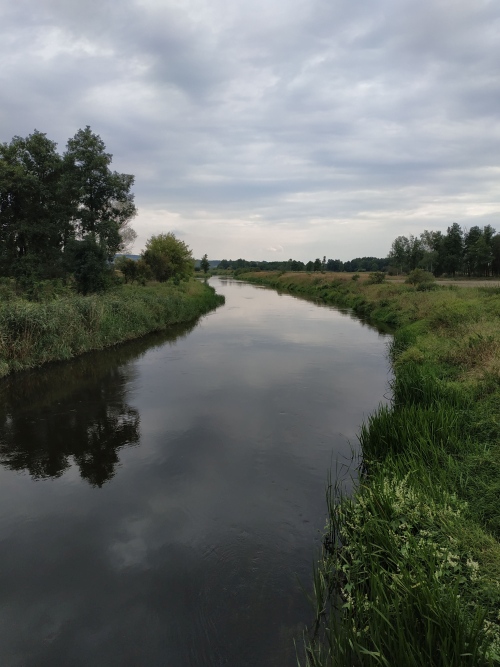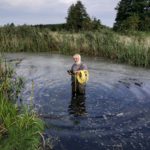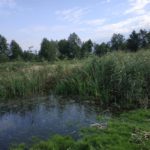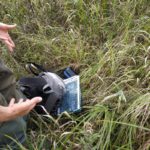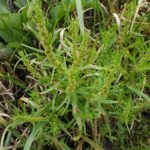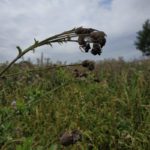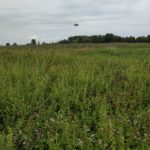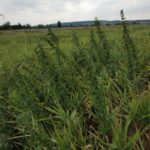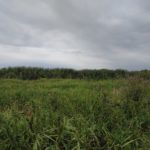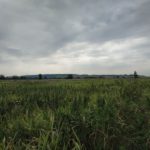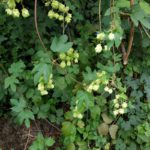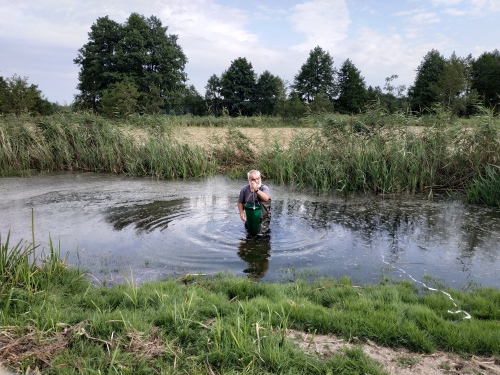
21 Aug Nature monitoring of oxbow lakes
In the largest Polish lowland rivers, a community of photoautotrophic organisms — phytoplankton — develops in the water depth which, in accordance with the Normative Definitions of the so-called Water Framework Directive (Directive 2000/60/EC) in force in the EU Member States, is one of the biological quality elements taken into account in the assessment of the ecological status and fertility of these rivers.
Therefore, on 16 August 2019, habitat refuge specialist Kalina Adamczyk together with scientists from the Institute of Nature Conservation of the Polish Academy of Sciences carried out nature monitoring of the oxbow lakes. The monitoring was carried out by two groups. One group was responsible for the gathering of phytoplankton, the other one was responsible for habitat mapping.
The first group, consisting of prof. Tadeusz Zając and Katarzyna Zając, PhD gathered water samples from the depth of about 0.2 m from inside of the water reservoir with the help of appropriate phytoplankton nets. Samples were preserved with Lugol’s alkaline liquid until dark yellow (cognac) to protect the plant material from adverse effects of zooplankton. Additionally, each time samples were taken, water physicochemical parameters such as temperature, pH or oxygen content were measured.
The second group, consisting of habitat refuge specialist Kalina Adamczyk and dr. Joanna Korzeniak, marked the boundaries of habitats on the map, taking into account the classification of habitats and plant communities and their species composition. Proper identification of plant communities contributes to comprehensive recognition of the state of biocenosis, its living conditions and changes occurring in it.
The aim of phytosociological works is creating a detailed inventory and cartography of plant communities together with the identification of current and potential plant communities, the degree of deformation and degradation of habitats as well as the determination of directions and methods of phytocenosis revitalization deviating from the normal state. This is the main condition for the creation of appropriate basis for the assessment of natural conditions of the analyzed object and for taking protective decisions.
The collected and processed data will be used to prepare environmental expertise in a given area.

